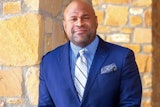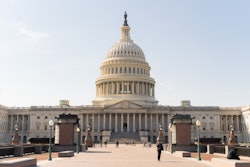Dear BI Career Consultants:
How can a college or university president work with the local community to create a warm
environment for minority faculty and their families in a predominantly White town or city, especially when there has been a previous racial incident?
Dr. Rosemary Gray Watterson
Equity and Diversity Officer, University of Scranton, Scranton, Pa.
I think the first step is to develop a position and office that is responsible for supporting the university’s commitment to diversity, multiculturalism, social equity and affirmative action. The person hired in this position should be responsible for providing advice, services, training and development opportunities that support the university’s mission.
A president can provide other leadership opportunities in the community through an office of equity and diversity run by an administrator. For example, I am going to become a part of Leadership Lackawanna this fall, the leadership group for the county where my university is located. The administrator for an office of equity and diversity is a collaborator, both on and off campus, for the purpose of creating an inclusive environment that strategizes with others to encourage participation and contributions by all who are a part of the decision-making process for improving the working, living and learning environments in a multicultural community.
This office can also serve as a liaison with the local community. When I first took my current position, there was a reception to introduce me to the Black community. That was key, partly because of my cultural background, but more because it allowed me to meet the Black community. This gathering of local Black community and business leaders produced a dialogue that continues today. Because of many questions and suggestions by those in attendance at the reception, an Executive Leadership Council was formed to see how we could work together for the Black community’s interests as they relate to the local community and the university and to improve the climate for minorities. We also have an offer from a local business to help publish a directory so that a new or potential minority faculty or staff member and their family may find it easier to work and remain with the university, as well as feel comfortable in the community.
While the council is a group of Black business and community leaders, we also have an open forum after each meeting where we invite other culturally different groups to engage in dialogue with us. We want to foster good relationships with all persons in our community. The formation of a special interest council similar to ours is not exclusive to our specific cultural group and is a strategy that can be duplicated by any cultural group. We would like to look back several years from now and know that we made a difference for new minority faculty, staff and their families or for any community. We are a resource and hope to always be a resource for developing a multicultural community in our area.
Dr. Johnnella E. Butler
Associate Dean of the Graduate School and Professor of American Ethnic Studies, University of Washington, Seattle
As society becomes ever more complex, it seems to me that college and university presidents need more than ever to combine their academic and scholarly expertise with their financial and political savvy in order to lead institutions successfully in the 21st century. In no other arena of contested thought and behavior is this truer than in issues of race and racism.
When a high-profile racist incident occurs, minority faculty and their families keenly feel the range of the resulting emotional atmosphere — from hostility or fearful silence to overcompensation that rings hollow. Rarely do presidents join with the local community and politicians to denounce racism openly. Minority faculty and their families often are the ones called upon to defend, explain or justify their responses or nonresponses to racism. The burden of race that should be shared, unloaded, embraced, analyzed and ultimately dispelled by all of us, becomes, once again, theirs alone to reject, try to address or simply struggle through life with.
College and university presidents should work with faculty, students and the local community in ways that help the institution be perceived as a vital part of the community and that bring together scholarship, teaching and community/everyday life. Building a university infrastructure that connects colleges and universities as a resource and facilitator with churches and cultural, social and political organizations connects the institution in a responsible way with the cultural and social realities that affect recruitment, admission and retention of students and faculty of color. It also encourages the institution to be viewed by faculty, students, community leaders and the average citizen as a place where people can bond around shared interests, problems and situations.
Officials need to set an example. College and university presidents must take the initiative to confront racism openly, comprehensively and in a sustained fashion, linking with community efforts toward the ends of fairness and building a welcoming and inclusive environment.
— Compiled by Joan Morgan
© Copyright 2005 by DiverseEducation.com















